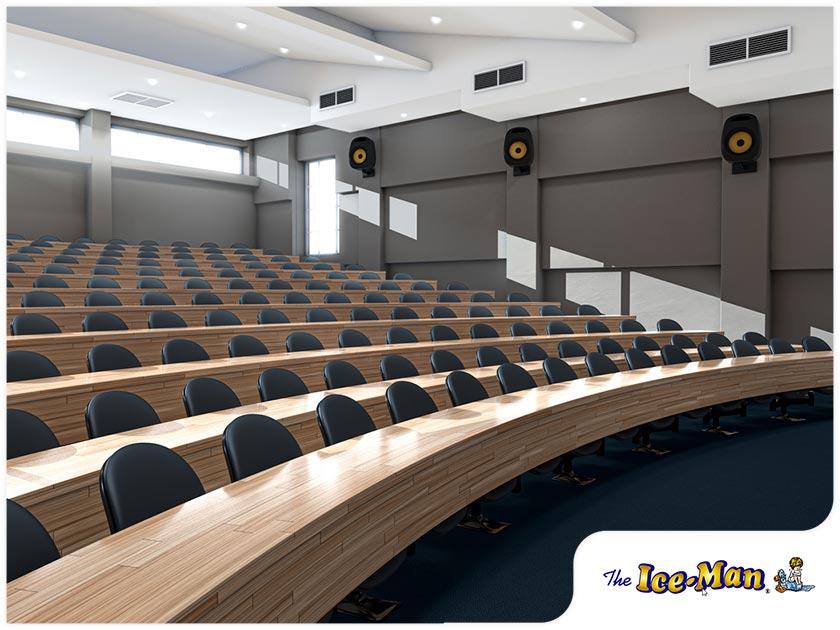
A well-maintained HVAC system is vital in providing a healthy school environment. Without proper heating, cooling, and ventilation, the productivity and performance of students and teachers could be affected.
In this article, The Ice-Man explains the importance of keeping HVAC systems in schools in good condition.
The Relation of Indoor Air Quality to Students’ Health
Studies show that indoor air polluted with dust, germs, bacteria, and mold can cause illnesses and discomfort among students and teachers. Some symptoms that could show up among children and adults are irritated eyes, upper respiratory infections, and nausea. Poor indoor air quality can also lead to increased student absenteeism. Regular HVAC maintenance in educational facilities will help ensure better indoor air quality and a cleaner environment for students and school staff.
The Effect of Temperature and Humidity on Student Concentration and Productivity
According to research, students perform better in classrooms that maintain moderate humidity levels from 40 to 70% and temperatures ranging from 68 to 74 degrees. These factors can affect a person’s concentration, memory, and learning ability. During HVAC tune-ups, technicians inspect thermostats and controls to ensure indoor temperature and humidity can be adjusted accordingly.
Proper Ventilation
Ventilating classrooms and other school spaces help remove or dilute airborne contaminants that accumulate indoors. These include particles from breath, sweat, clothes, and other agents that can be harmful in specific concentrations. To ensure proper ventilation and a safer space for students and educators, school HVAC systems need to be regularly checked.
Whether you need HVAC maintenance or repair services for your home or business, The Ice-Man is here to assist you. We are dedicated to providing superior heating and cooling services. To schedule a consultation, call us at (609) 466-9020 or complete our contact form to request a service estimate.
